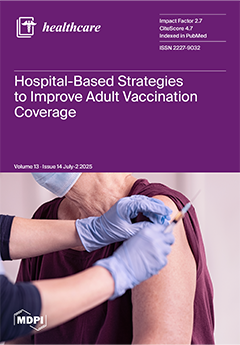Background and Objectives: Caring for an individual with dementia encompasses many challenges. This can lead to increased burden, anxiety, and mental health issues among those taking care of them. Limited research exists investigating the care of people with dementia in Kuwait, particularly regarding the mental health of caregivers. There is a need to understand the impact of caregiver burden in this population. This study aimed to assess the level of burden of care, depression, anxiety, and well-being among caregivers of the elderly with dementia in Kuwait.
Methods: This study used a descriptive and cross-sectional design. To measure the burden of care, depression, anxiety, and well-being of the caregivers, we utilized the Zarit Burden Interview, the Hospital Anxiety and Depression Scale, and the World Health Organization-Five Well-Being Index. A sensitivity analysis was conducted to compare the results of the parametric and non-parametric methods.
Results: This study included 180 (65%) caregivers for the elderly with dementia and 98 (35%) without dementia. The descriptive statistics showed that caregivers for the elderly with dementia and caregivers for the elderly without dementia experienced moderate burden (17.21 ± 9.09 and 14.51 ± 8.08, respectively), borderline abnormal anxiety (9.92 ± 5.15 and 8.61 ± 4.79, respectively), borderline abnormal depression (8.69 ± 4.35 and 8.06 ± 4.24, respectively), and low mental health well-being (54.40 ± 25.10 and 58.90 ± 23.42, respectively). The
t-test of independent samples and Mann–Whitney U test results showed that the burden and anxiety in the caregivers for the elderly with dementia group were statistically significantly higher than those in the caregivers for the elderly without dementia group (
p = 0.015 and
p = 0.039;
p = 0.026 and
p = 0.027, respectively). The ANOVA test and Kruskal–Wallis test revealed that the caregivers for the elderly with dementia group had statistically significant differences in burden (
p < 0.001;
p < 0.001), anxiety (
p = 0.048;
p = 0.043), depression (
p = 0.017;
p = 0.009), and mental health well-being (
p = 0.001;
p = 0.002) scores across various durations of care. The multiple linear regression showed that caregiving was a significant predictor of burden of care and anxiety, indicating that caregivers of the elderly with dementia experienced a higher burden of care than those caring for the elderly without dementia. In addition, confounders with significant influence were duration of care (
p < 0.001), education level (
p = 0.002), employment status (
p = 0.008), and gender (
p = 0.02).
Conclusions: Family caregivers experienced significant levels of burden of care and anxiety when caring for the elderly with dementia. A multidimensional holistic approach is needed to provide family caregivers of the elderly with dementia with valuable interventions.
Full article






